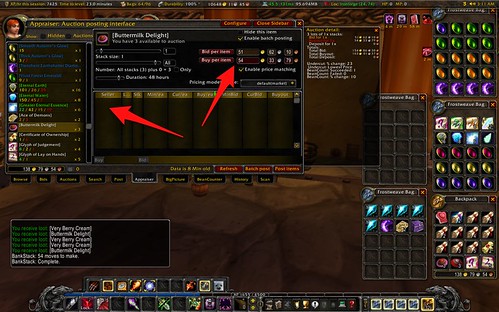Recommended: Scarborough Fair Bed and Breakfast, Baltimore, MD
There are few places in the world of hospitality that I’d actually recommend. Most of the places I’ve stayed – and there have been many – were sufficient to be a place where I’d get some sleep and a bite to eat, but nothing else.
Hotel chains are valued precisely for the consistent mediocrity, just like fast food – you know what you’re going to get the moment you see the sign on the road. You don’t have to ponder whether the Big Mac or the Holiday Inn will be significantly different in Topeka or Trenton. It won’t be.
As a result, most of the places I’ve stayed are sufficiently mediocre, which means I usually can’t wait to get home after a few days, and if someone asks for a recommendation for a certain city, I’m hard pressed to come up with one.
 Except Scarborough Fair. Bed and breakfasts are not my thing, and to be perfectly honest, it wouldn’t have been a place that I searched out. But this particular one happens to be co-owned by a Blue Sky Factory employee, and is within slow walking distance of the Baltimore office, so it made perfect sense to stay there.
Except Scarborough Fair. Bed and breakfasts are not my thing, and to be perfectly honest, it wouldn’t have been a place that I searched out. But this particular one happens to be co-owned by a Blue Sky Factory employee, and is within slow walking distance of the Baltimore office, so it made perfect sense to stay there.
Wow, am I glad I did. I stayed in the lavishly appointed Edgar Allan Poe room, which was a lovely, if gothic, room decorated to evoke the themes of Poe’s life. An electric fireplace, a writing desk with Poe’s literary works on it, a giant private bathroom – it literally felt like home rather than a hotel.
 The breakfasts were amazingly good, too. For the road warriors among us who are used to the standard rubber eggs and cardboard biscuits under the hotel lobby heat lamps, Scarborough Fair’s fare was a considerable step up. On my last morning there, breakfast was a cheese and crimini mushroom omelet with sage, vanilla oat parfait, blueberry and white chocolate biscotti, and of course coffee. Try getting anything like that at a hotel.
The breakfasts were amazingly good, too. For the road warriors among us who are used to the standard rubber eggs and cardboard biscuits under the hotel lobby heat lamps, Scarborough Fair’s fare was a considerable step up. On my last morning there, breakfast was a cheese and crimini mushroom omelet with sage, vanilla oat parfait, blueberry and white chocolate biscotti, and of course coffee. Try getting anything like that at a hotel.
The innkeepers, Barry and Jeff, run an awesome little home away from home, and I’d definitely recommend staying there versus a regular hotel if you’re in the Baltimore area. It’s at 801 S. Charles Street, Baltimore, MD. How much did I enjoy staying there? They get the highest compliment I can think of from me, an optimized outbound link from an AdAge Power 150 blog, that’s how much.
Find their web site here: Baltimore Bed and Breakfast.
Did you enjoy this blog post? If so, please subscribe right now!
Get this and other great articles from the source at www.ChristopherSPenn.com! Want to take your conference or event to the next level? Book me to speak and get the same quality information on stage as you do on this blog.




